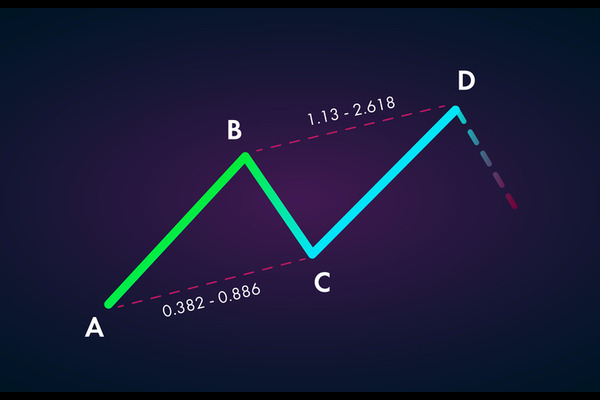In the world of investing, the term "bargain stocks" often piques the interest of those looking for opportunities to get in on undervalued companies that may be trading at lower prices than they're truly worth. But what exactly are bargain stocks, and how can traders spot them? Are these stocks a real opportunity or simply a trap that could lead to significant losses? In this guide, we'll walk through the essential aspects of bargain stocks and explain how you can identify the right ones, make informed decisions, and ultimately build a portfolio that works for you.
What Are Bargain Stocks and How to Spot Them?
At their core, bargain stocks are shares in companies that are undervalued relative to their true worth. In other words, these stocks are trading at a price lower than what analysts or traders believe they should be, based on their potential for growth, earnings, or assets. Traders often look for bargains in the hope that the market will eventually realise their true value, leading to a significant price increase.

But how do you spot a bargain stock in the first place? The key is looking for signals that suggest the stock is being overlooked or mispriced by the market. This doesn't necessarily mean the company is in financial trouble; it could simply be that the market is temporarily undervaluing it due to short-term factors like poor earnings reports or negative media coverage.
There are several ways to identify a bargain stock. The first is by looking at its price-to-earnings (P/E) ratio. A lower P/E ratio compared to the industry average can indicate that a stock is undervalued. Similarly, examining its price-to-book (P/B) ratio – which compares the stock price to the company's book value – can provide insight into whether a stock is trading below its real worth. However, it's important not to rely on just one metric. A thorough analysis should also consider factors like the company's revenue growth, debt levels, and future prospects.
Key Factors to Consider Before Investing in Bargain Stocks
While bargain stocks can offer great potential, it's essential to approach them with caution. Just because a stock is cheap doesn't necessarily mean it's a good investment. Several key factors should be carefully considered before diving in.
One of the most important things to examine is the company's financial health. Even if the stock price seems attractive, you need to be confident that the company has a solid foundation for growth. Look at its earnings reports, balance sheet, and cash flow. A company with consistent revenue growth and manageable levels of debt is generally a safer bet, even if its stock is undervalued in the short term.
Another crucial factor is the company's industry and competitive position. Is the industry growing, or is it in decline? A bargain stock in a struggling industry might not have the same potential for recovery as one in a thriving sector. Understanding the company's position relative to its competitors is also key. Does it have a unique product or service? How well is it positioned to take advantage of future market trends?
Lastly, timing is everything. A bargain stock might not be a bargain for long if the market starts to recognise its true value. Sometimes, it's worth waiting for signs of improvement or a change in sentiment before making a purchase. In other words, patience and timing can make a big difference in whether you're able to realise a profit from a bargain stock.
Top Bargain Stocks to Buy in 2025
As 2025 unfolds, the stock market is brimming with bargain opportunities for those willing to dig deeper. Many companies are currently undervalued, trading at prices that don't fully reflect their long-term potential. These bargain stocks are often overlooked by the market, creating an opportunity for traders to buy quality companies at a discount. Here are some of the top picks for 2025 that could offer significant value for those seeking bargains:
Energy Sector: BP plc (BP)
The energy sector has been a rollercoaster in recent years, with fluctuating oil prices and the global push toward renewable energy creating both challenges and opportunities. BP, one of the world's largest energy companies, has been investing heavily in its transition to cleaner energy while maintaining a strong foothold in traditional oil and gas. With a low P/E ratio and a solid dividend yield, BP's stock appears undervalued compared to its long-term potential. As the world balances its energy needs, BP's diversified approach could make it a standout performer by 2025.
 Technology Sector: Intel Corporation (INTC)
Technology Sector: Intel Corporation (INTC)
The tech sector is known for its high-growth, high-valuation stocks, but Intel is a rare exception. Once a dominant player in the semiconductor industry, Intel has faced stiff competition and production challenges in recent years, causing its stock price to lag. However, the company is making significant investments in new manufacturing facilities and cutting-edge technologies, positioning itself for a potential comeback. With a P/E ratio well below the industry average and a strong balance sheet, Intel could be a bargain stock with significant upside by 2025.
Retail Sector: Macy's Inc. (M)
Traditional retailers have struggled to adapt to the rise of e-commerce, but Macy's is one company that's fighting back. By focusing on omnichannel strategies—combining online and in-store experiences—Macy's has managed to stabilise its business and even grow in some areas. The stock is trading at a low P/E ratio and offers a generous dividend yield, making it an attractive option for value traders. If Macy's can continue to innovate and attract customers, its stock could see a strong recovery in the coming years.
Healthcare Sector: Pfizer Inc. (PFE)
Pfizer became a household name during the COVID-19 pandemic, but its stock has since fallen out of favour as demand for vaccines has waned. However, Pfizer's pipeline of new drugs and treatments, combined with its strong financial position, suggests that the company is far from finished. Trading at a low P/E ratio and offering a reliable dividend, Pfizer's stock looks like a bargain for traders willing to bet on the long-term growth of the healthcare sector.
Financial Sector: Barclays plc (BARC)
Banks have had a tough time in recent years due to low interest rates and economic uncertainty, but Barclays is one financial institution that's showing signs of resilience. With a strong presence in both retail and investment banking, Barclays is well-positioned to benefit from rising interest rates and a recovering global economy. The stock is trading at a low price-to-book ratio, making it an attractive option for traders looking for undervalued opportunities in the financial sector.

What Makes These Stocks Stand Out?
The common thread among these companies is that they're trading at prices that don't fully reflect their long-term potential. Whether it's BP's energy transition, Intel's technological investments, or Macy's retail innovations, each of these companies has a clear path to growth. Of course, investing in bargain stocks always comes with risks, and it's important to do your own research and consider your risk tolerance before making any decisions. But for those willing to take a closer look, these stocks could offer significant rewards by 2025.
Disclaimer: This material is for general information purposes only and is not intended as (and should not be considered to be) financial, investment or other advice on which reliance should be placed. No opinion given in the material constitutes a recommendation by EBC or the author that any particular investment, security, transaction or investment strategy is suitable for any specific person.



 Technology Sector: Intel Corporation (INTC)
Technology Sector: Intel Corporation (INTC)




